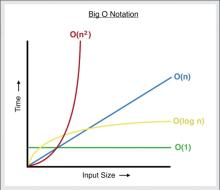Common are discussions around writing code these days. General interest in coding and the process of delivering code is not only limited to IT professionals. Business managers are a high percentage of coder camp students. Managers are looking to understand the coding process better and how to introduce efficiencies to it.
Much modern code is logical and managed by their environment. Some code is functional and requires understanding of the business needs being addresses. Some code is scripted and calls for an understanding of the underlying environment running it. However, most code is intuitive and readable by people from all kinds of professional backgrounds. So how does a manger know the coding effort is headed in the right direction?
If code is generally readable, can everybody code? The short answer is yes, absolutely. However, when we ask, "can everybody deliver production worthy code?", now a discussion is in order. To start the conversation let's look at an "If" statement. If something meets a condition then do something. Generally that is how such a statement translates across most programming languages. Straight forward enough by most standards. But what does a production worthy "If" statement look like? It executes logic quickly without delaying a web page from rendering, a report from processing, or a mouse from moving. So a production worthy "If" is different without question by virtue of its expected outcome.
Measurable how? Application Architects calculate Big-O functions to gauge code complexity in an effort to avoid negative performance impact. Big-O functions are non-linear measures of how long code takes to execute. In the case of the "If" statement, each needs a Log(n) time to execute. So two "If" statements nested will add a big delay before the code finishes running. The same applies to "For" loops which are Big-O exponential functions. When nested exponential more time is needed for the code to finish. Application Architects are mindful of the sum of Big-O functions and may ask for the removal of conditional statements or loops so performance is within expectations.
Code is measurable by KPIs. As a manager championing projects involving coding you should understand Big-O functions and have discussions with your Architect and technical teams to maintain performance expectations.

